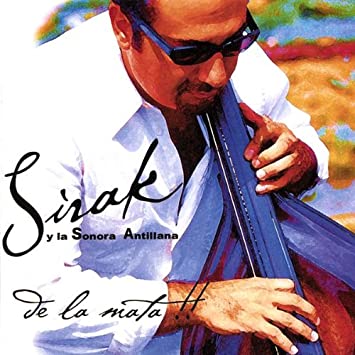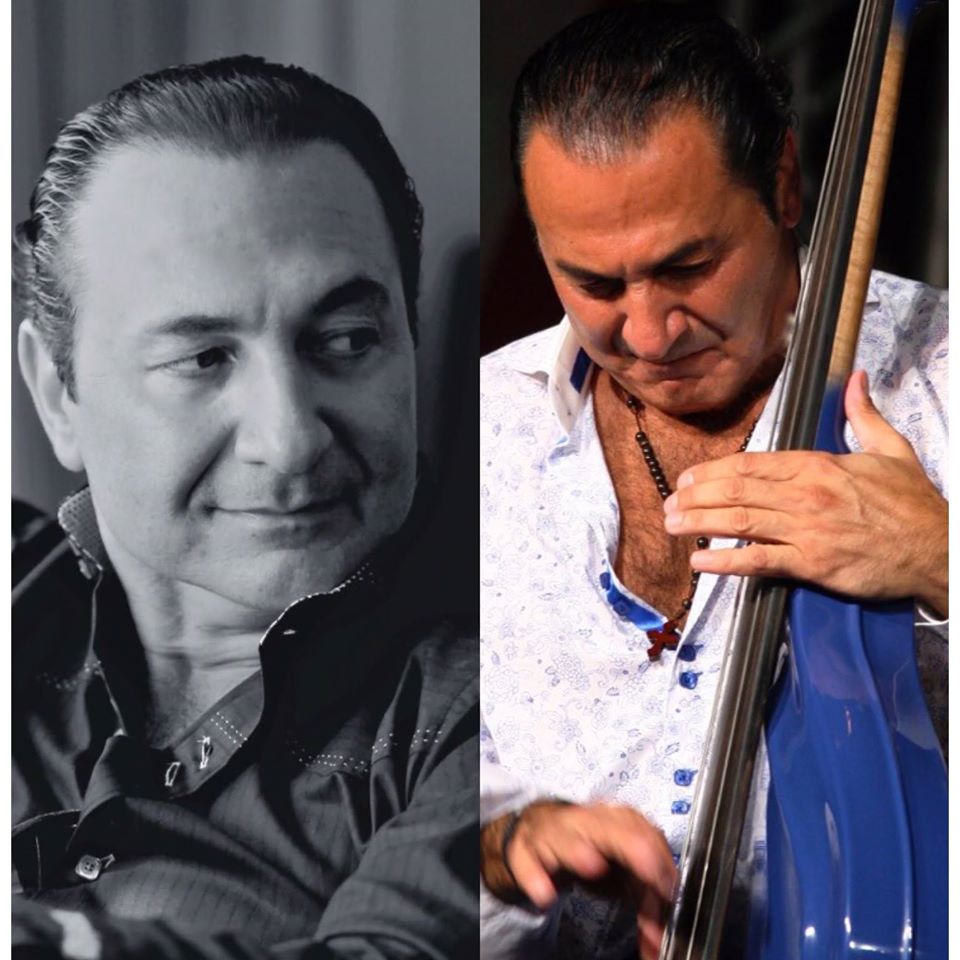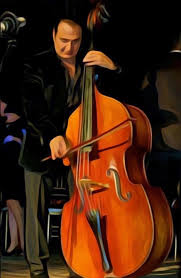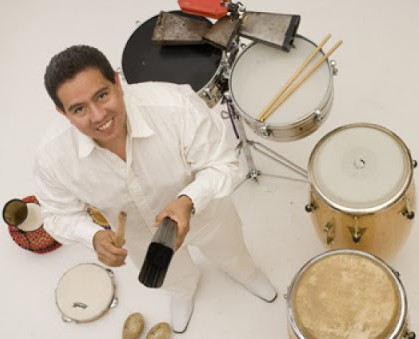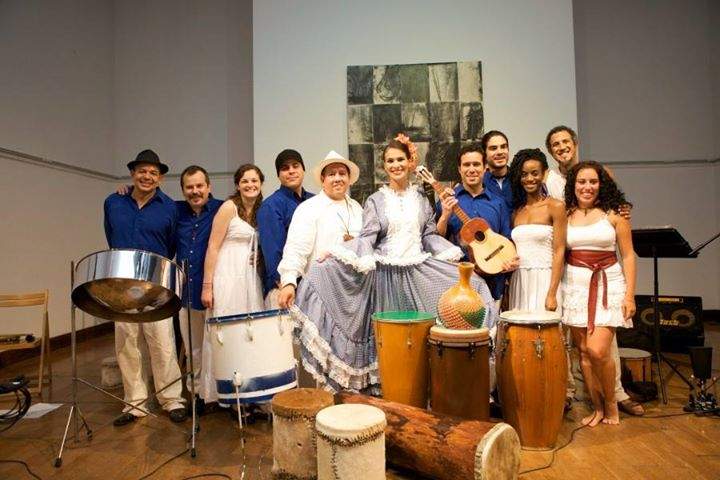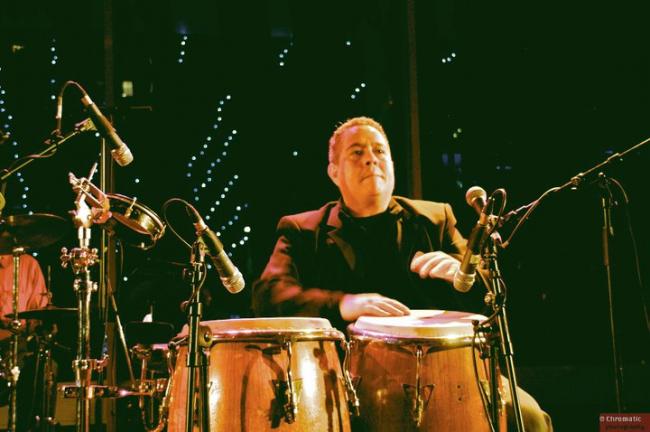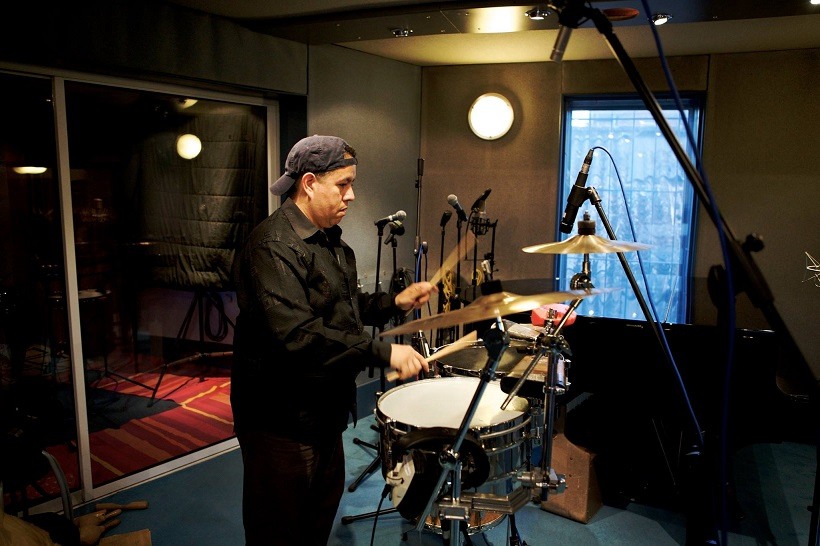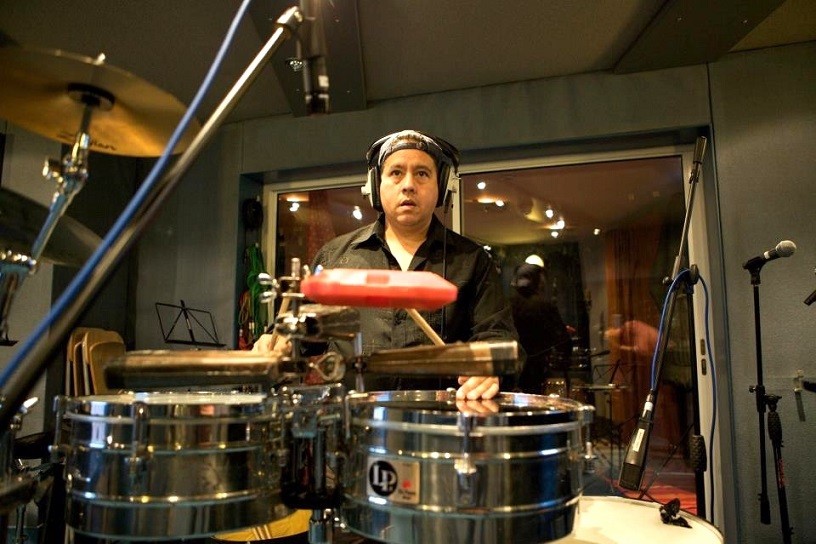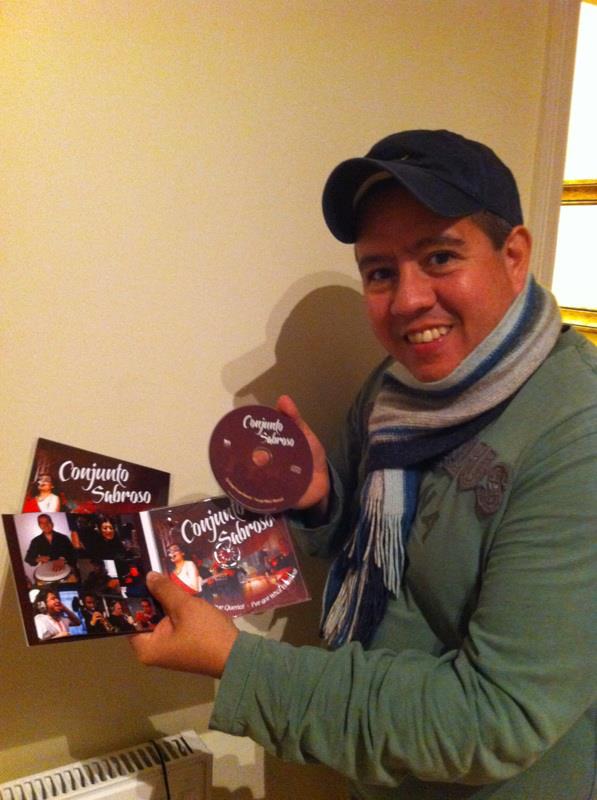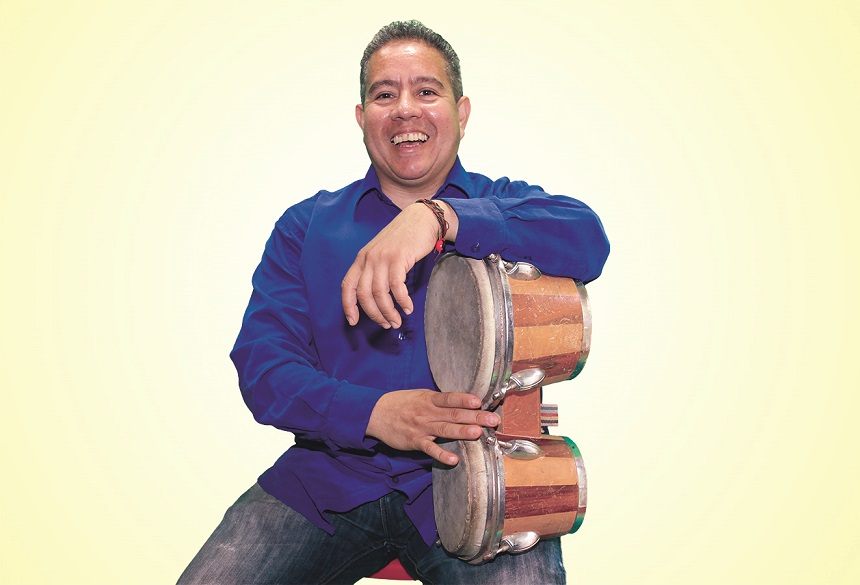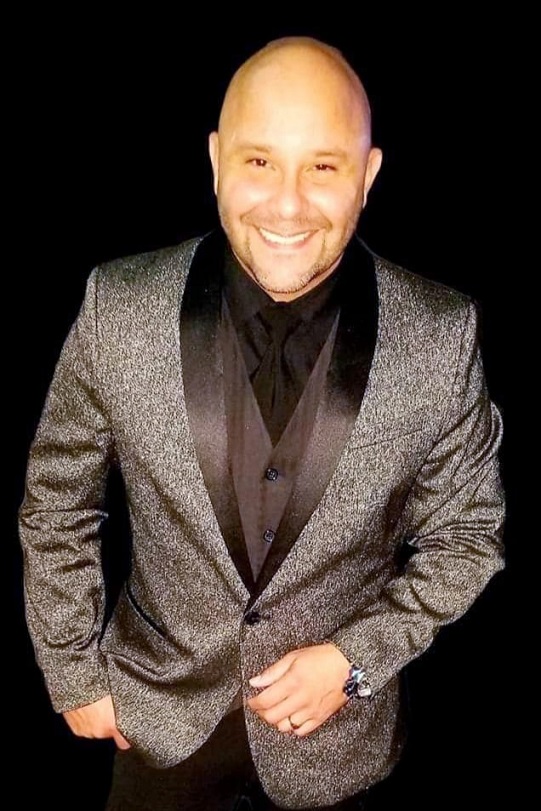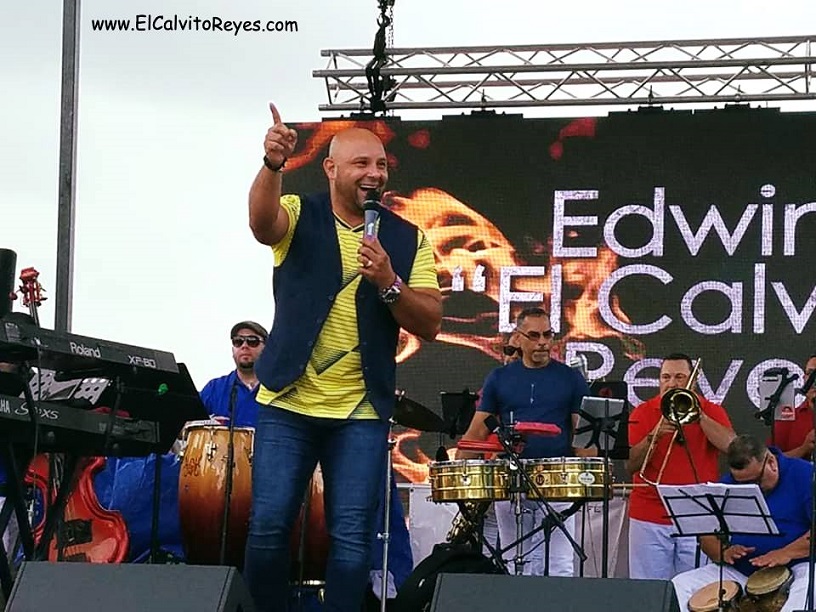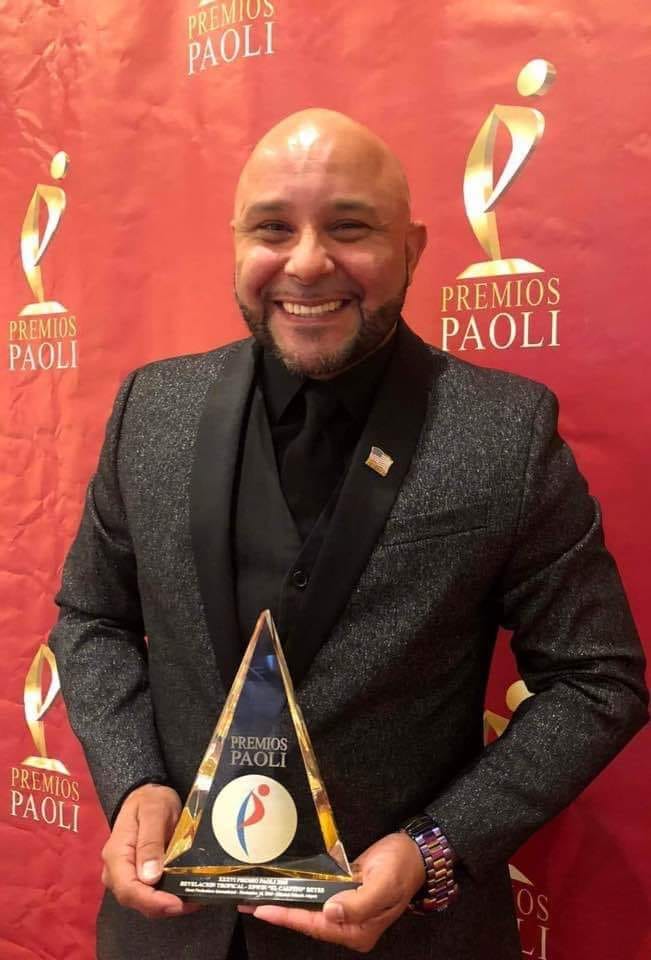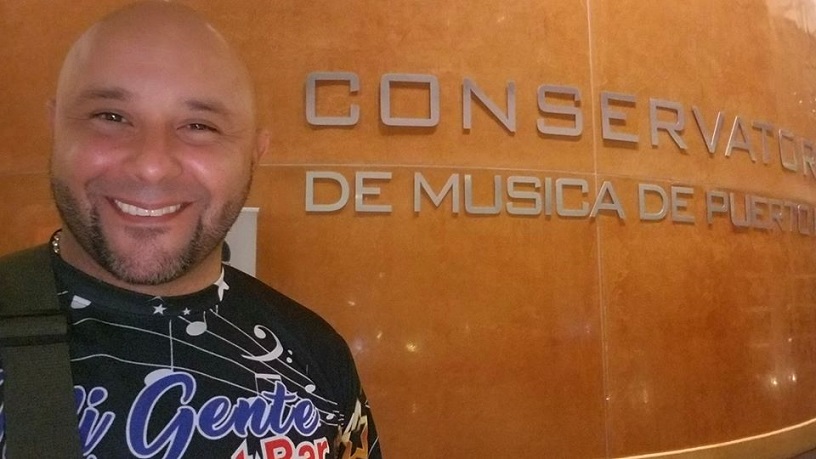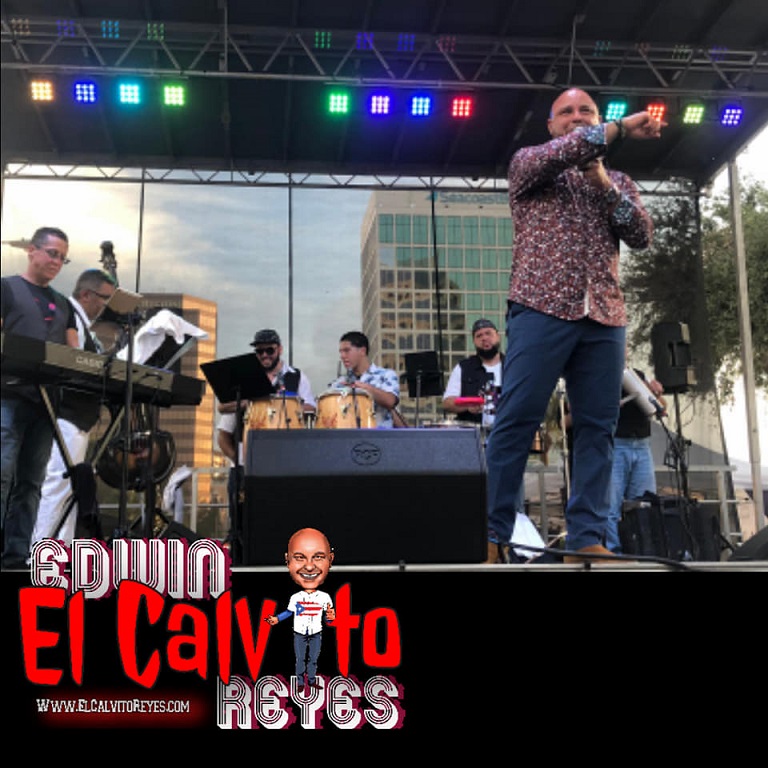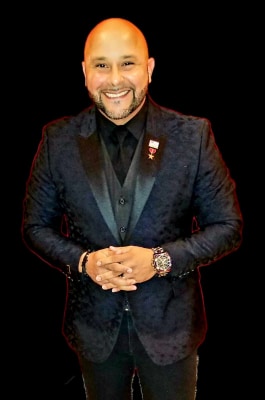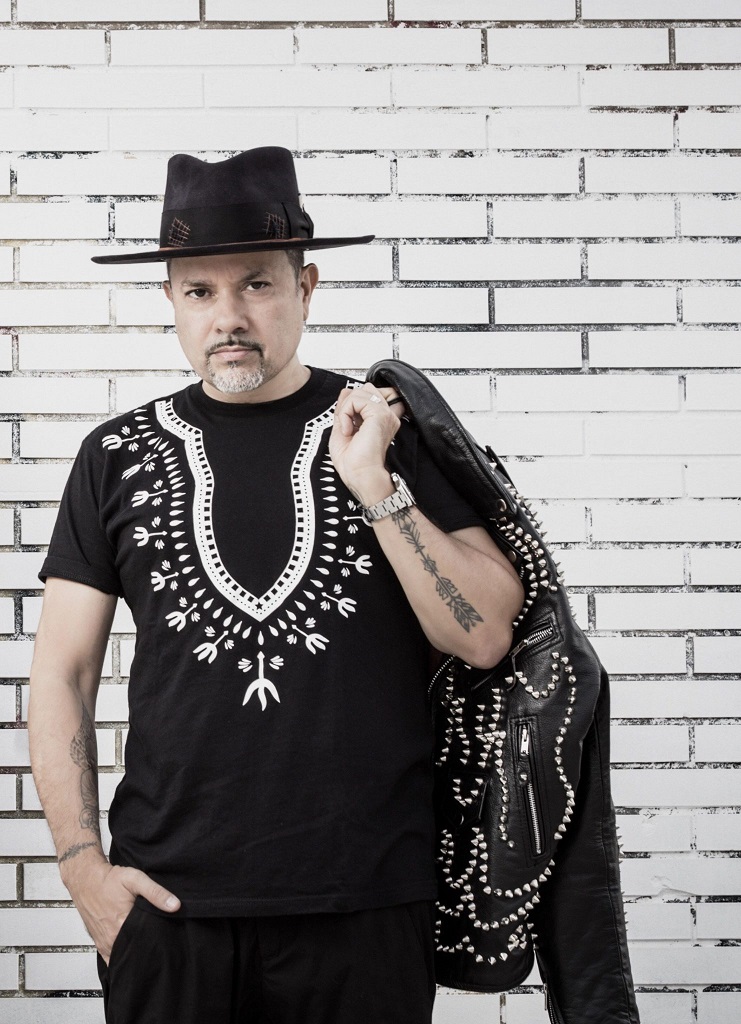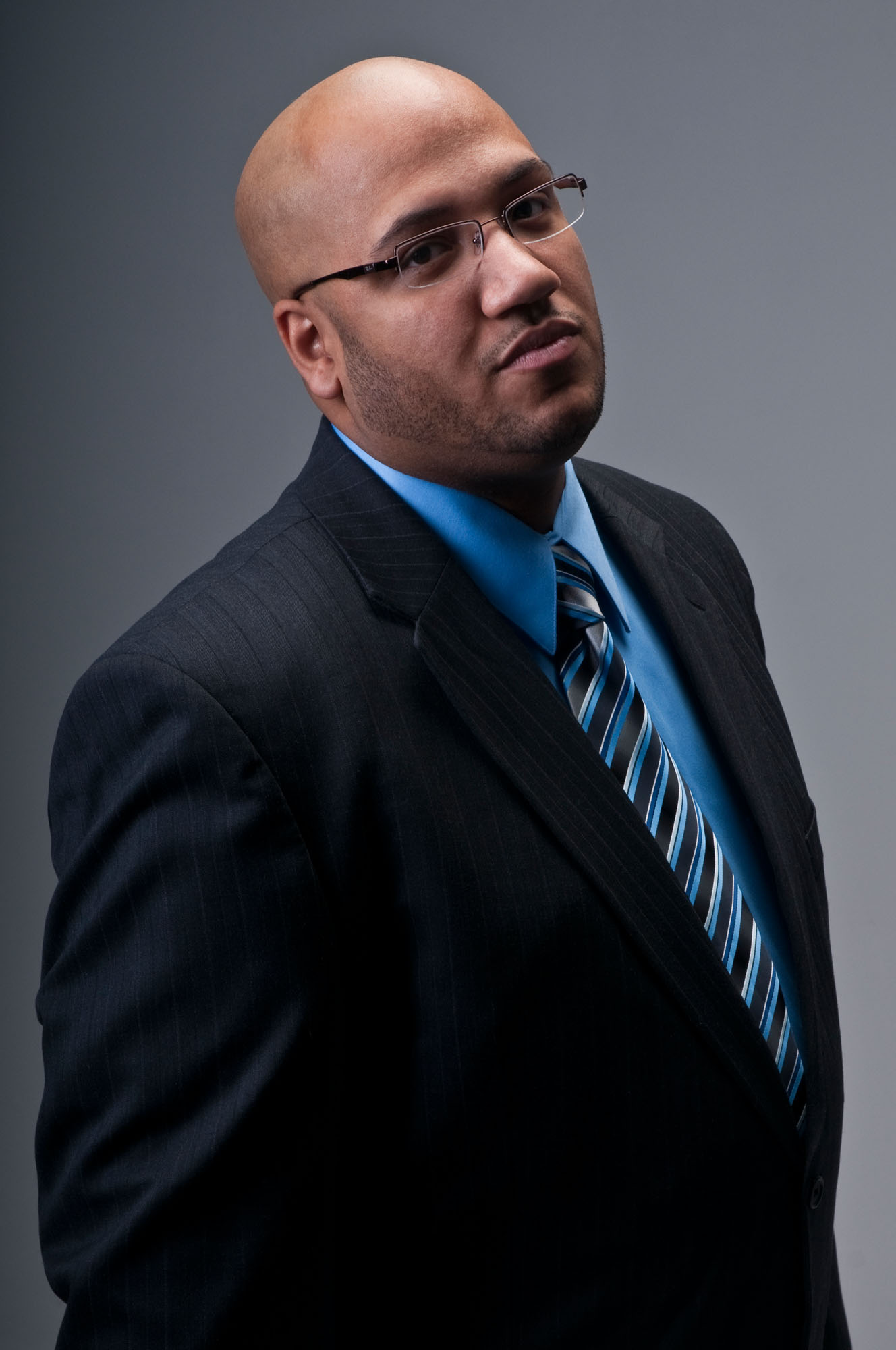North America - USA - California - Los Angeles
Phil Robinson, Sonero, composer, performer and leader of his own orchestra.
His charisma and his entrepreneurial, creative and positive attitude make everyone who has the opportunity to talk with him enter his world, his love for music, and his passion for improving, learning and being better every day. Phil Robinson has loved art from a young age.
The artistic influences that he had from his mother and his aunts, directed him to a gratifying world full of unforgettable experiences. A complete artist, with many stories to tell and whom it is definitely worth learning from.

Born in the Bronx, New York, to Dominican and Puerto Rican parents, he grew up and had his first approaches to music in the Dominican Republic, surrounded by close family members who sang, recited poetry, and performed. When he was just 5 years old, he listened and was inspired by the Spanish singer, Joselito, considered a child prodigy for the time.
With the passing of the years, and as a teenager, he returned to the Bronx that saw him born, just in the days of Fania. He admits that at that time his voice was not yet fully developed, but thanks to his sister he was always in contact and learning about Latin music, especially Salsa.
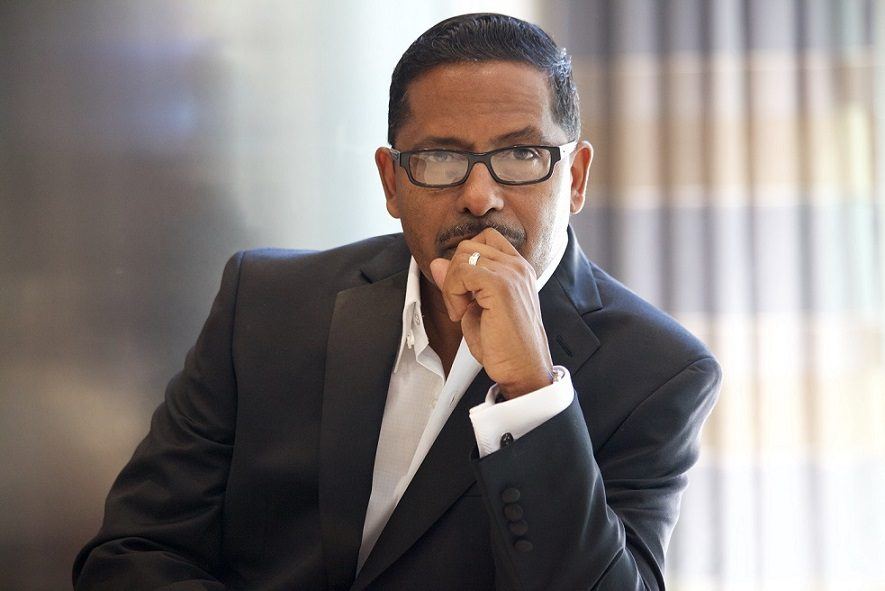
“I had a lot of interesting exhibitions. At the time when I returned from the Dominican Republic, I lived for a long time in the South Bronx, where I was born. And I had the opportunities to see all those artists like Larry Harlow and Ismael Miranda (who worked together), Héctor Lavoe, Willie Colón… And I looked at these Latino artists and said to my sister: One day I am going to be on that stage! ”
Beginnings full of learning
By the 1960s and 1970s, Latin music was booming in the United States. In addition to radio, orchestras had become mainstream and performed in American venues. All of this was very enriching and motivating for a young Phil Robinson.
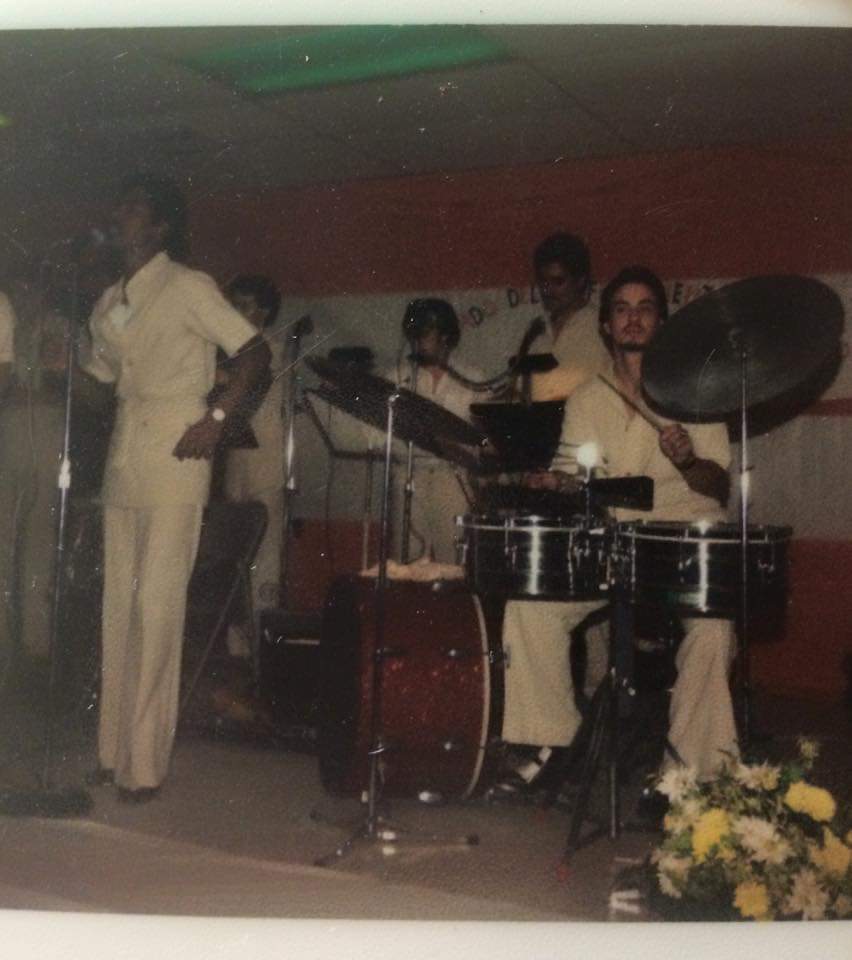
The Orquesta Yaré of southern New Jersey was the first group in which Phil Robinson had the opportunity to participate, develop his voice and work to improve his native talent. With this participation, it was time to explore more, focus on the music, and let it all flow down to the path Phil wanted to lead.
“Music is an art. It is a profession that takes a lot of sacrifice, which requires being very consistent, and never letting yourself be carried away by negative thoughts that you are not going to achieve it, but rather thinking that God knows what He does and how far He wants to take you ”
The Orquesta Yaré was a dream of a young man who, like Phil, wanted to succeed in the world of Latin music. Founded and directed by Leroy Gutiérrez (conguero, timbalero and bongo player) with original themes; and his brothers Johnny (bongosero) and Loui (trumpeter).
At that time, Leroy was a percussionist, but he also learned to play the piano by himself, without having a teacher. Gutiérrez invited Phil to participate, to make him a star. Yaré was an orchestra of 12 musicians, all the music was original.
“Our first performance was in 1973, on San Juan Day, at a celebration of el Día de Puerto Rico, in Vineland, New Jersey. I began to develop my voice, I did not have so much control over it, nor did I know how far it could go; but I had the enthusiasm that I was seeing something that I had been dreaming about for a long time, and it was coming true. ”

They played at Landis Park in Vineland, NJ. That night Larry Harlow and Néstor Sánchez has invited, and Orquesta Yaré accompanied them. It was a dream to be able to play alongside artists he admired. After years of that presentation happened, Phil Robinson reunited in Los Angeles with Néstor Sánchez and was able to share a photograph of that first presentation.
It’s fascinating how Phil recounts all these unforgettable experiences:
“…They had taken me a photo with him, and I had that photo here for years. Someone invited me to a show where he was going to be here in Los Angeles, and I grabbed my photo and took it for the meeting. That day he signed me the photo of more than twenty years ago… and he did remember me! ”
Everything that has happened in all these years since that first presentation in 1973, have been experiences to remember for a lifetime, and have given him the push to keep going.
“No one has to instill in me what it is to be in music, because that is already in me, it is in my blood, it is in my feet. No one has to ask me to continue in the music ”
Those encounters with certain characters who already had names, who was famous; and he found himself next to them, was enough to keep Phil’s energy high forever, continuing with the work to make dreams come true, and trying to be as original as possible.
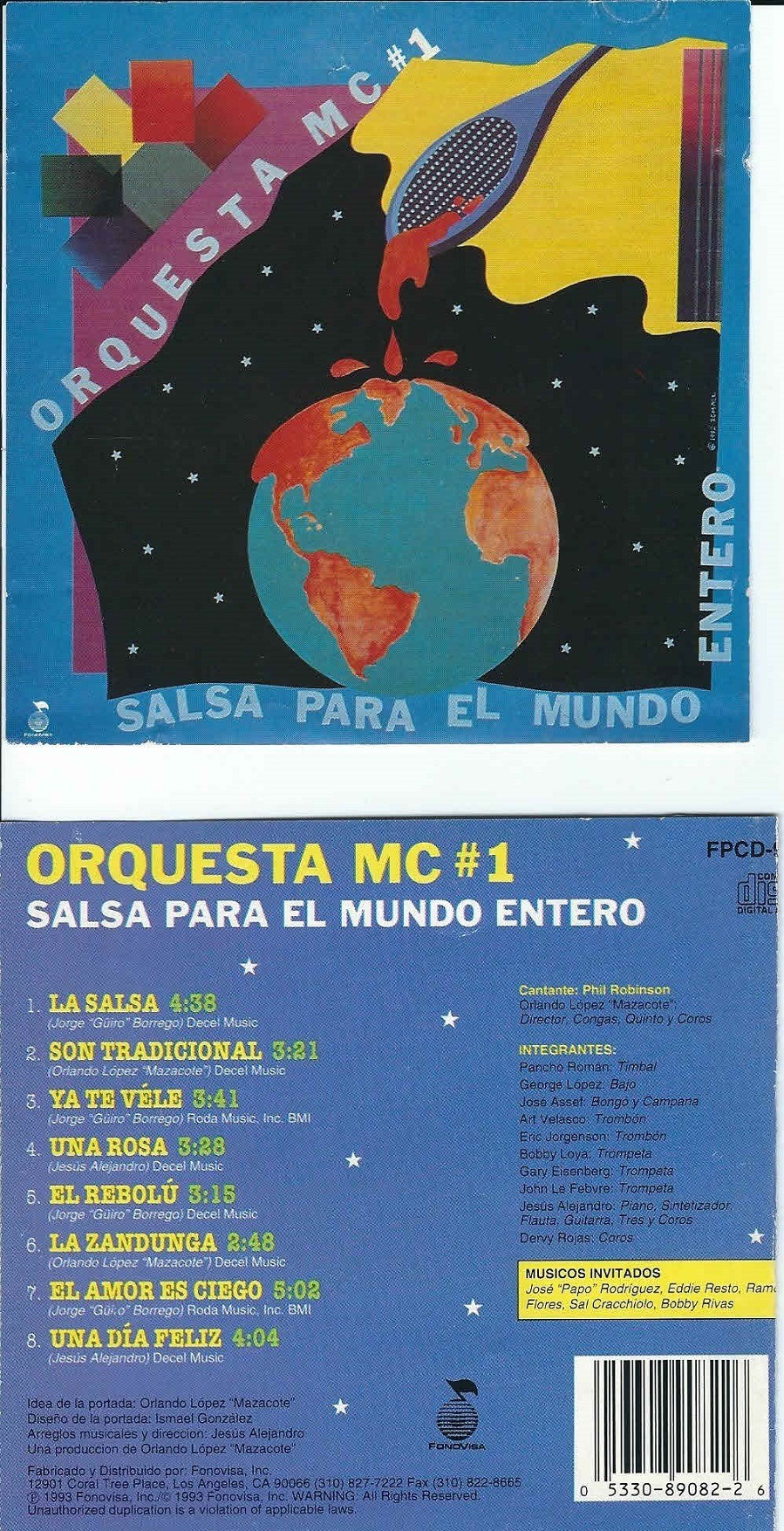
Each experience has allowed him to gain knowledge of how music works. Times have changed and it is no longer so necessary to have a “sponsor” who invests in you and helps you finance an album, or who promotes you. You can do it yourself.
The key to reinvention
Although he confesses that it’s not something that he has planned, every day Phil thanks God for a new awakening and in his mind there is always that spark of imagining what he can do to take that daily opportunity to improve himself and always be active.
When referring to the current situation, generated by the Covid-19 pandemic, he thinks that the inconvenience that has affected everyone the most, especially for be unexpected, is the possibility of working freely.
But he remains positive towards the future, thinking that everything will pass. Applaud the initiatives of his colleagues in Los Angeles, where he currently lives, to use social media to sing their original songs and keep in touch so that people stay aware of what they are doing.
Regarding his activity on social networks, Phil tells us:
“For my part, I have not prepared to make that kind of approach to social media. But sometimes I put my songs on, or send a positive message to the salsa community, to my friends, to my colleagues, to people who like my music. And I stay present, not daily, because people forget about you when they don’t see you, but when they hear a lot about you, the magic goes away … I like that people don’t get so tired of seeing you or hearing your name, but suddenly you show up and people realize that you are in contact. “
Don’t be sad, very soon you can expect a couple of performances by Phil Robinson on his social media, with the tracks of his original music, to keep in touch and accompany him at this moment in which it is so important to stay at home.
The charismatic artist thinks that what is happening now is going to completely change the normality to which we are accustomed. Although he does not know what the end result will be, because everything is very uncertain, he knows that the salsa community is looking forward to the moment of returning to the clubs, and reflects on the need to be 100% sure of maintaining our safety and individual care. , and that of those around us.
For now, all that we don’t know about the new virus affects many professions, including that of singers, artists and musicians who live by being in contact with the public and constantly exposed. Still, Phil trusts God and thinks that this is part of a natural evolution like other situations that humanity has faced before, and the key is to adapt and have patience, because, luckily, we have technologies and tools available that in other times did not exist.
“Here in Los Angeles there is a lot of talent, there is a lot of preparation with many musicians, and even if you are not on a stage, you can create. We can use technology to do certain things that we don’t normally do because we are on stage all the time and people are physically seeing us. This has evolved technology much more, because we are all turning to social media to keep in touch and continue sending the message, so that this message does not die”
Affirm with total conviction that there is nothing impossible in life, the important thing is to take your time and plan to carry it out. Consistency has kept him focused on his goals under the premise that while an artist knows who he is and on what feet he stands, the only thing that will happen is that he will evolve and improve.
Plans with your Sonora Pa’ Gozá’
The group has had several names, the first name emerged when Phil arrived to Los Angeles in the late 80’s. He had always wanted the freedom to sing what he wanted; something that he felt completely comfortable with, identified with, and made easy for him. Under this premise, and after everything learned, Manhattan West emerges (alluding to the place where Phil grew up), a small group with two trumpets, a saxophone, full percussion, piano and bass. When he was not busy with his commitments to other orchestras, he dedicated time to his personal project and in which he chose the music he wanted to sing.
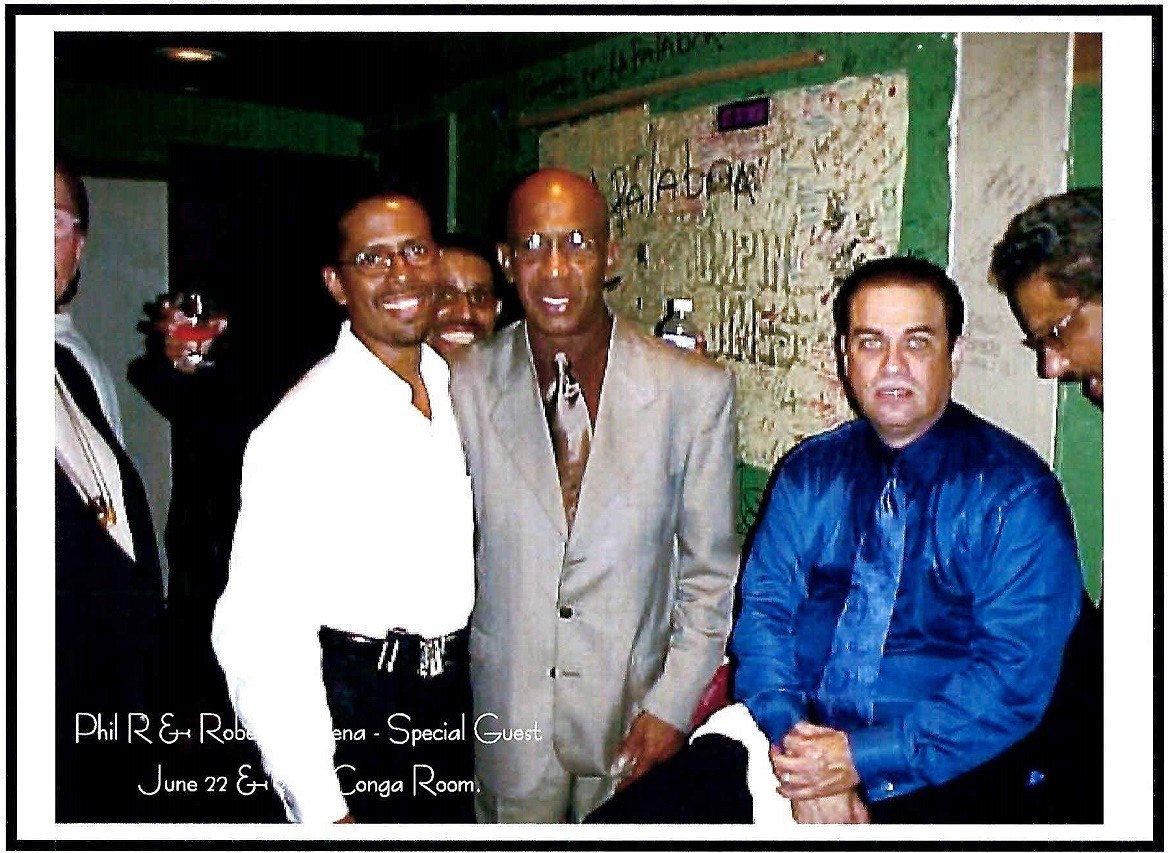
While evolving, he became the leader of Henry Mora and the All Star Salsa Orchestra of Los Angeles, collaborating with many of the local groups, from there he became the lead vocal for Eric Matos and La Caliente Orchestra, Papo Rodríguez and La Sorpresa, and recorded two original songs composed by the title of Nelson Montalvo Fantasía and Mi Regalo included on his 2005 CD, Oye Salsa Sabor y Clave.
During the time that Phil was with Papo Rodríguez, the Panamanian singer Camilo Azuquita arrived in the city and La Sorpresa became Azuquita y su Melao, Phil became Azuquitas for several years, performing in many places known as the Hollywood Palladium and with many renowned artists. Thanks to these collaborations, Robinson finished polishing his style.
“Much of the style that I have, my way of perform, how I sing, how I dance, everything, we can say that I caught it from him. Azuquita has a very special swing… He is a dynamic singer, even at his age… ”
Some time later, Manhattan West became Sonora Borinqueña, and finally obtained the name with which we know it today: Sonora Pa’ Gozá’.
With this name the essence of what Phil transmits with each presentation is maintained:
“Many people could not, or had difficulty pronouncing Borinqueña… so I said, wow, nobody is going to remember us!… Then there was Sonora Pa’ Gozá’ … I always have that energy … because I not only sing, I also like dancing, I like interacting with the public, I get off the stage. I consider myself very dynamic. ”
Between Two Worlds
Phil Robinson considers his most recent production Between Two Worlds, a master recording, because the songs that were chosen for that CD are not all tropical, but not entirely Americanized either. The arrangements are Big Band, songs like No me platiques más or Esto es Coco, were made in Big Band.
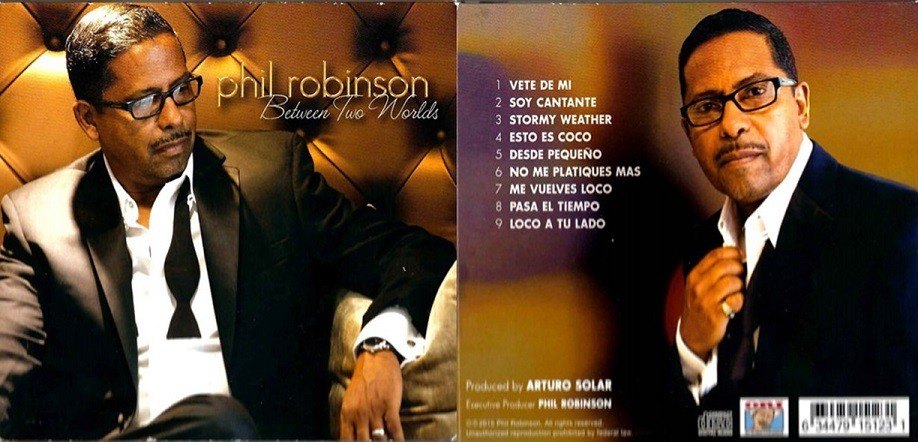
This project took seven years to complete, some of the songs were meticulously selected by Arturo Solar Fernández, who produced the project with compositions by Ted Koehler and Harold Arlen, Homero and Virgilio Expósito, Enrique Benítez, Vicente Garrido Calderón, Armando Manzanero, Jesús Alejandro (El Niño) and of course, Phil Robinson.
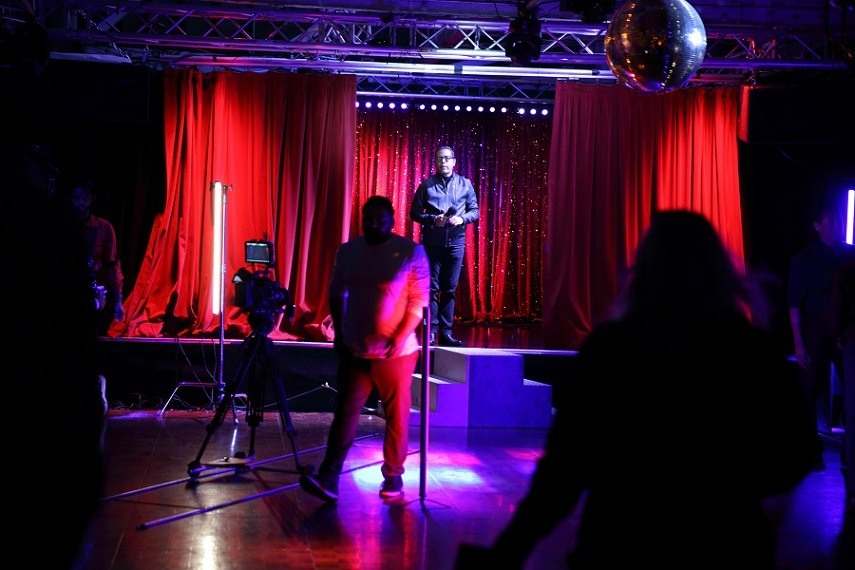
Robinson also had the opportunity to venture into the cinema and include two of his original songs (Soy Rumbero, from his CD Salsa Sabor y Clave; and Loco a tu lado, from his latest production Between Two Worlds), in the cast of a short movie titled Darling Boy, by Syrian producer and director Salim Samouh.
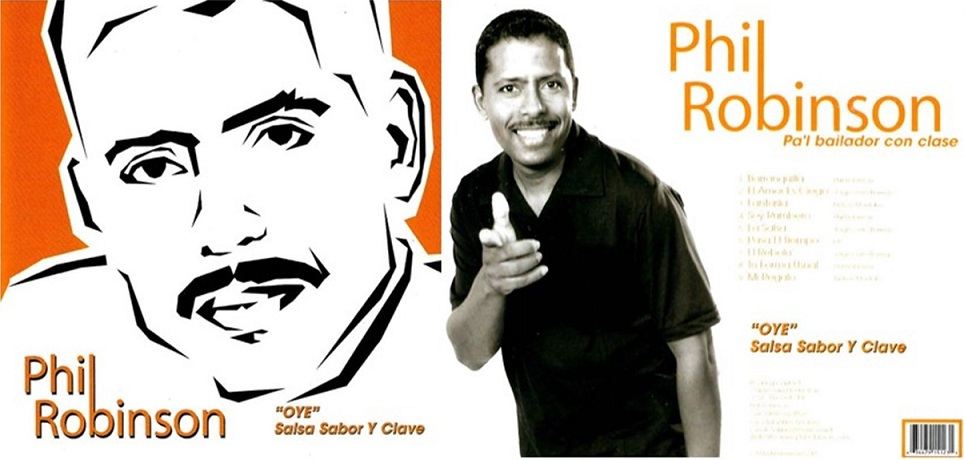
Future plans
In the not too distant future, Phil Robinson hopes to compile all his recorded songs with other orchestras, the solo songs (both in English and Spanish); and others in which he ventures into rhythms such as Bossanova (Night and Day). There are also other American songs that Phil wants to record with more danceable adaptations and with his original touch.
It will also resume the organization of the Puerto Rican Festival in Los Angeles, whose twenty-fifth anniversary will be celebrated next year, after being postponed by the Covid-19 pandemic. We will see Robinson and his Sonora Pa’ Gozá’ at this festival, accompanied by Puerto Rican artists, orchestras from Los Angeles, San Francisco and from all around the world.
Many presentations are coming, Phil Robinson will tell us as soon as the new dates are confirmed so that they can enjoy, dance … and gozá’!
Valuing what is really important
When asking Phil Robinson what he would say to those young people who are just beginning and who have a desire to achieve their dreams, he answered:
“My advice is to believe in yourself, take the examples of those who have experience, respect our genre … The salsa genre is very positive, but many people mistreat it too … Being original is important, developing your own style, being accessible with people, be professional from the beginning. Having in your mind that you are a professional, no matter what level you are on, is going to take you to the top, because that’s clear. Choose the music that identifies you as an individual, don’t imitate, be consistent and keep in mind that there are going to be sacrifices… you are going to fall, and you are going to get up. ”

Many, like Phil Robinson, have natural talents, but his advice is that you also have to polish yourself, learn from those who have succeeded, and find out who you are as an artist. Fight, improve and give your best at all times, in all places and no matter how much they are paying you. If a commitment is made, do it. People will value you for what you do.
Of all the accomplishments throughout his career, Phil Robinson believes that what makes him most proud are all his career years. The reception and recognition of the public that knows him and knows how long he has been in music; who continue to support him, who respect him. From musicians to the people who go to see him when he performs. All this is very valuable for him.
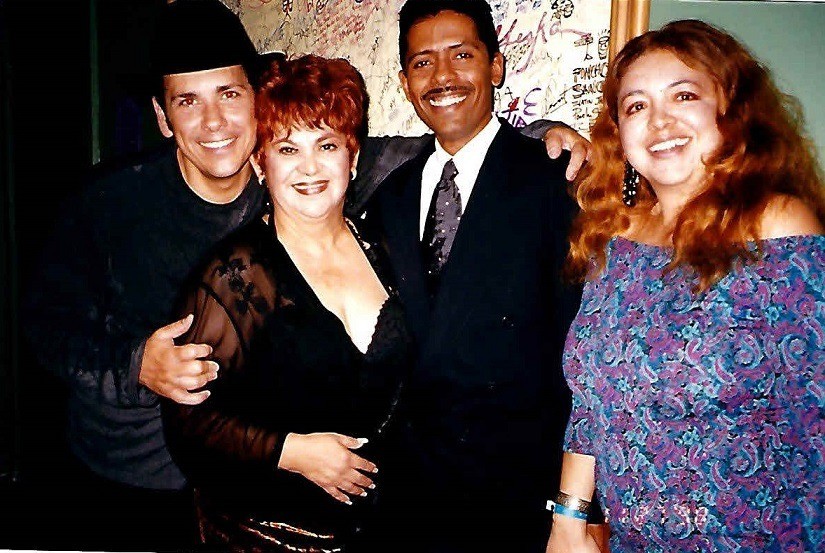
“… And the steps that I have been climb, and that I am still climbing, because this does not end. And also the opportunities to be, even briefly, with those who have already gone beyond what I have done … I am totally proud of what I have done, where I am … and I continue in the fight . Anything can happen. Always looking positively into the future.”
Phil Robinson is a quiet man, he has a beautiful family that is his most precious treasure, a beautiful family that supports him, accompanies him, and cares for him all the time.
His family is the most important thing, because will come a day when he will decide to retire from the stage, and although he does not expect it to be soon, one day he will do and his family will always be there to continue adding beautiful experiences together.
Phil Robinson thinks he’s been lucky. Today he continues working to improve himself, grow, and learn something new every day, because it is never too late.
“As long as there is skill and desire, I will continue in the same: making music, and being the most original. That is the only thing that separates you from the rest, because we try to honor our music, but it is always important to keep a percentage that says: Ok, this is Phil Robinson. All of this continues to be a dream that will never end. This will end the day that I close my eyes forever, and it will be so. ”


